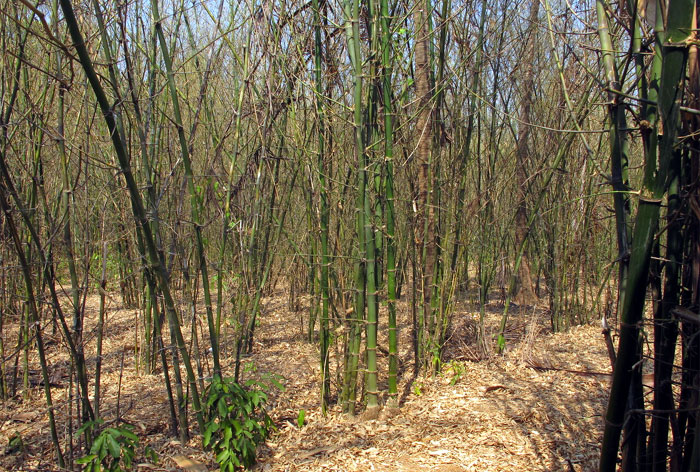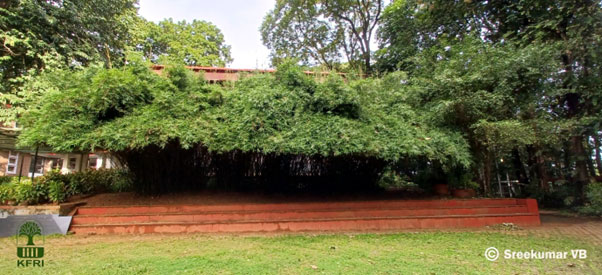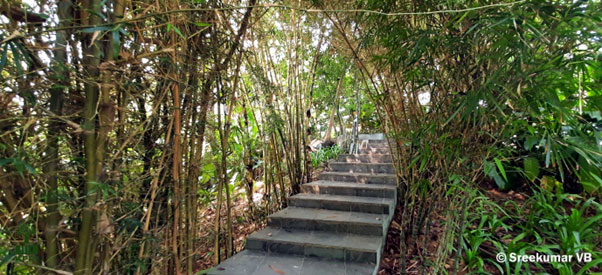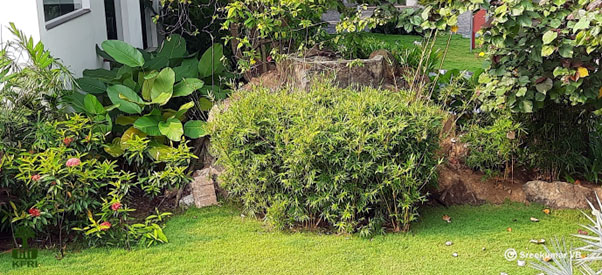Bamboos are a fast-growing renewable resource compared to other plantation trees, it grows very fast, and harvesting can be done after three to four years, depending on the species. The Cultivation of bamboo can stabilise and rejuvenate the soil and can be used as a potential material for the reclamation of wastelands. The wide fibrous root system and different types of rhizomes in bamboos are highly effective in preventing soil erosion, and a single bamboo clump can bind up to 6-7 cubic meters of soil. Bamboo cultivation can be undertaken as large-scale plantations for commercial profit on land ranging in area from an acre or less to a few hundred hectares.
Models of plantations
- Large-scale plantations: This can be of any scale ranging from 1 ha to thousands of hectares area for the commercial production of different purposes mentioned above. It is preferred that while establishing large bamboo plantations (50 ha or more), bamboos should be mixed with some deep-rooted tree species, such as figs, legumes, or palms. These trees could be planted in bamboo plantations with a spacing of 20 × 50 m and a distance of 3–5 m to the nearest bamboo plants. Mixed strips or patterns of deep-rooted tree species will also be good.
- Smallholder farm block plantation: Smallholder farmers can establish bamboo as agro-forestry or block planting of different scales (a few bamboo clumps to any scale).
- Farm boundary and shelter bed planting: Smallholder farmers can plant bamboo in farm boundaries, contour lines and shelter belts in the case of streams, rivers and so on.
- Household planting: A few bamboo clumps can be planted close to homesteads to meet daily fuel wood, fodder and other sustenance needs.

At homesteads, bamboos can be planted as block or boundary plantations, ornamental plants for landscaping or avenue plantations, or on the periphery of farmlands as effective windbreaks. In Northeast India, bamboos are common in homesteads mainly as a source of shoots for household needs. Marketing bamboo shoots is an additional income by selling a surplus quantity of shoots. As bamboos have different heights and growth characteristics, care should be taken before integrating them with crops or fruit trees in home gardens. In Kerala, bamboos are grown in the village homesteads, mostly occupying the backyard and periphery of the holdings.
Bamboos can be planted as ornamental hedges especially the species like Bambusa multiplex, Bambusa wamin, Pseudosasa japonica, Shibataea kumasasa, Fargesia dracocephala, Schizostachyum brachycladum, Phyllostachyus spp. etc., Most of these are slender, thin-walled, and grown as tight clumps with profuse branching which can be able to maintain desired height through pruning.
Bamboo can be planted very closely and linearly in at least two rows and in triangulated formation, which helps to conserve soil moisture by reducing evaporation and making an appropriate microclimate in the leeward area. So, it acts as a shelter belt to protect cropland from wind and dust and improves crop quality and yield.

Bamboo planted as ornamental hedges
Bambusa multiplex

Landscaping with bamboo
Bambusa multiplex and Bambusa wamin

Landscaping with bamboo
Bambusa multiplex
Calendar of operations
These calendars are ready-reckoner containing classified information about yearly Post plantation activities and month-wise plantation operations. It will help bamboo planters timely perform the necessary plantation operations. These operations are available in detail on the bamboo cultivation section of this website.
Post plantation activities
Year 1 (Plantation establishment year):- Before planting, the onset of monsoon, initial application of fertilizer and Farm Yard Manure at 10 kg per pit may be applied.
- The Second dose may be given 2-3 months after planting.
- Irrigation in the initial phase in summer to avoid suffering from moisture stress during the early establishment and growth phase.
- Regular weeding.
- Soil loosening, mulching, and mounding.
- Ensuring fencing.
- Continuation of activities outlined in the first year.
- Casualty replacement.
- Initiation of culm maturity marking.
- Compared to the second year, shoots will be considerably taller and more diameter.
- Clump structure will be apparent.
- Continuation of the basic set of activities mentioned.
- Culm maturity marking.
- Removal of the weak and diseased shoots.
- Weed requirements will be less compared to the previous year.
- Plantation will be the full phase of establishment.
- The Canopy and clump structure would be stabilized.
- Continuation of the basic set of activities such as weeding, soil loosening, mulching, and mounding.
- Bamboo leaf litter can be used for vermicomposting.
Monthly activities in brief
January – March- Ensuring irrigation to the bamboo clumps.
- Harvesting of culms is generally done during this period.
- Cleaning, soil moisture conservation works, mulching.
- Best months for offset collection) collected from 12-18 months old culms).
- Adding soil and fertilizers (FYM, urea) to the base of the clump.
- Removal of broken culms and replant uprooted clumps.
- The ideal season for raising branch cuttings, culm cuttings and seedlings.
- Removal of damaged culms.
- Thinning the clump if necessary ( essential from the third year onwards).
Protection of Plantations
The bamboo plantation should be protected from fire, pests, and grazing. The young seedlings should be protected from the grazing and rhizomes and culms damaged by wild boar, deer, porcupines etc., especially in the plantations adjacent to forest areas, and other domestic animals also feed the young leaves. Protection measures like razor wire fencing and a plastic net around each clump can be adopted. Fencing with GI barbed wire is a relatively expensive option, but it is easily arranged and durable.
If the rhizome is well developed, the fire affects only the above-ground culm portions and new sprouts will be produced during the forthcoming monsoon. However, in the case of young seedlings with immature roots and rhizomes, the fire outbreak will be highly affected leading to the total replacement of seedlings.
